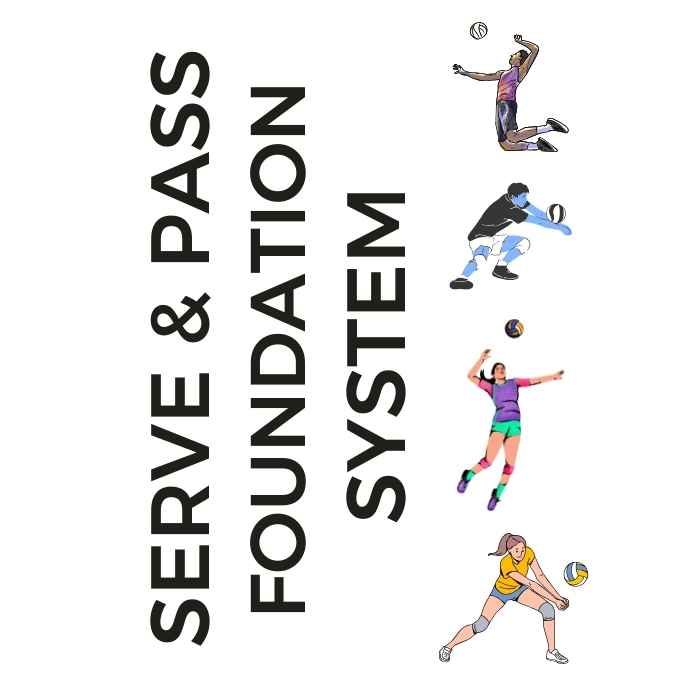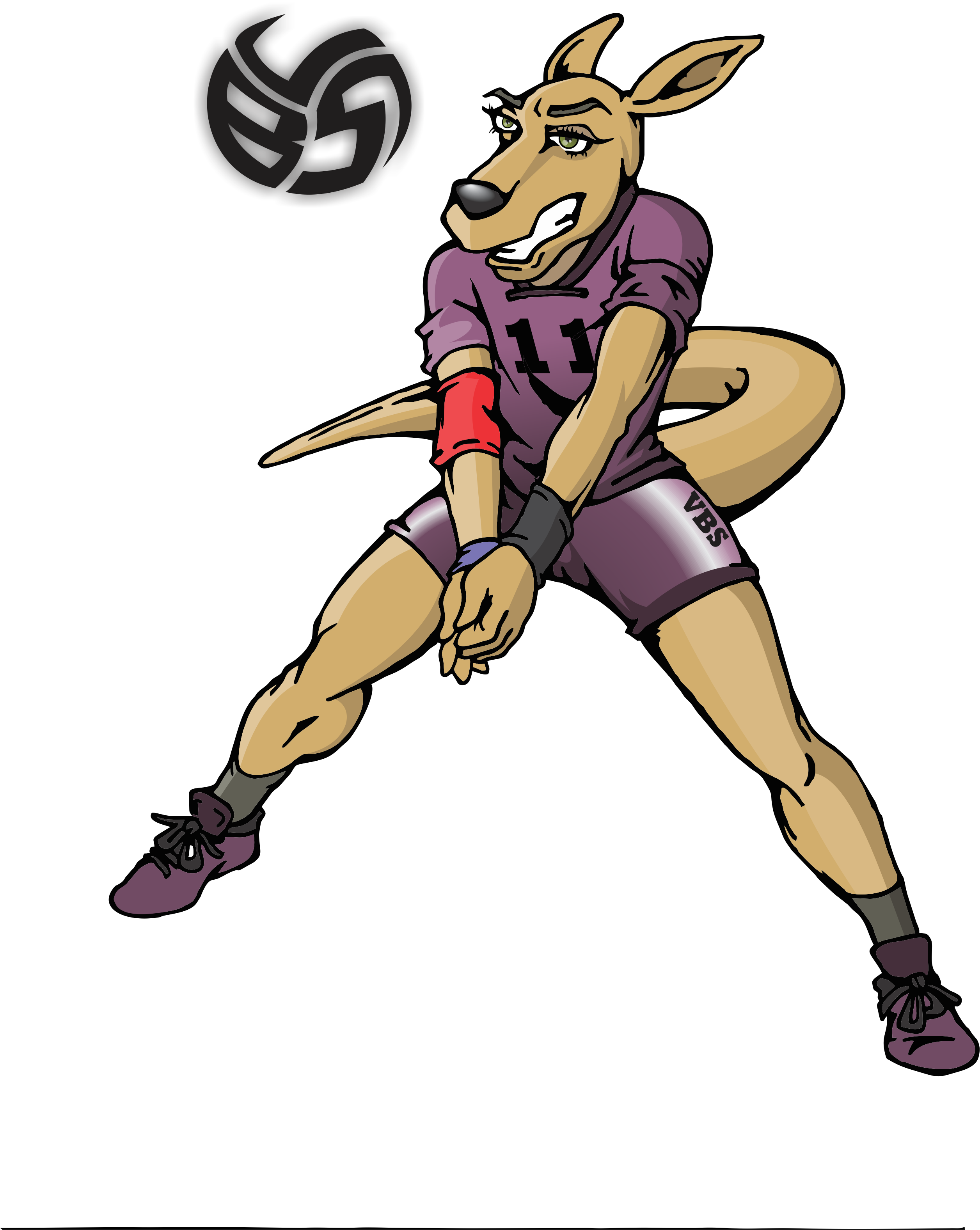
Serve + Pass Foundation System: The Complete Skills Arsenal The two-skill mastery system that transforms inconsistent players into the athletes coaches build their lineups around. Stop Struggling With The Two Most Important Skills In Volleyball!
- Improve Your Volleyball with Coach April
- Advice For New Coaches
- How To Receive Volleyball Serve
How To Receive Volleyball Serve Tips To Learn How To Fix Your Pass
This coach's playbook helps new coaches learn to teach how to receive volleyball serve to elevate their team's serve receive skills with tips and drills.
As a new volleyball coach, you understand the importance of building a strong foundation for your team's success.
One of the most critical skills to master is serve reception, often referred to as "passing."
In my comprehensive guide, we'll explore the essential techniques, drills, and strategies to help you elevate your team's serve receive game.
The Fundamentals of Serve Reception
Proper serve reception technique is the backbone of a successful volleyball program.
Let's start by breaking down the key elements:
Feet shoulder-width apart, knees bent, weight on the balls of the feet. This balanced, athletic stance allows players to react quickly to the serve.
2. Passing Platform Formation
Arms extended, hands clasped, creating a flat surface to contact the ball. A solid platform ensures a clean, controlled pass.
3. Movement to the Ball
Quick, short steps to get behind the ball before contact. Efficient footwork is crucial for accurate passes.
Now that you are learning more about how to coach serve receive - grab my step-by-step advanced passing checklist that I use with my private training clients.
4. Eye on the Ball
Keeping eyes focused on the ball from the server's hand until contact is made. This visual focus is essential for making adjustments and reading the serve.
Mastering these fundamentals lays the groundwork for more advanced serve receive skills.
I like to work on this 3 person "Dodgeball" drill where the person in the middle has to choose which side to get their midsection out of the way of the oncoming ball that's being tossed at their chest before they present their passing platform with an angled shoulder positioned towards the target.
Progressing from Basics to Game-Like Scenarios
When teaching serve reception, it's important to take a progressive approach.
Start with isolated drills to build muscle memory, then gradually increase the complexity to simulate game situations.
1. Stationary Passing Drills
Focus on proper platform formation and ball control through partner passing, wall drills, and self-toss exercises.
2. Dynamic Movement Drills
Incorporate shuffling, jogging, and jumping to develop footwork and reaction time.
3. Serve Simulation Drills
Have players receive serves from a coach or teammate, gradually increasing serve speed and placement.
4. Game-Like Situations
Create pressure-filled scenarios by adding defenders, varying serve types, and incorporating transitions to the next skill.
By building up from the basics, your players will develop the confidence and decision-making abilities needed to excel in match play.
Now that you are learning how to receive the volleyball serve, learn more about how to coach passing skills with my serve receive strategy checklist
Effective Communication Strategies
Clear communication is essential for a serve receive group of passers.
Encourage your players to:
1. Call the Ball
Establish a system where players clearly communicate who will take the serve.

2. Provide Feedback
After each rep, have players offer constructive feedback to their teammates.
3. Encourage Positive Reinforcement
Foster a supportive environment where players celebrate each other's successes.
Troubleshooting Common Issues
As your players work to improve their serve reception, you may encounter some common challenges.
Be prepared to address these:
1. Inconsistent Platform
Remind players to maintain a stable, flat platform throughout the contact.
2. Footwork Struggles
Emphasize the importance of quick, efficient movement to get in position.
3. Eyes On the Ball
Stress the need to keep visual focus on the ball from start to finish.
4. Lack of Confidence
Build up players' self-belief through positive feedback and incremental goal-setting.
By identifying and addressing these issues early on, you'll help your players develop more reliable and confident passing skills.
Integrating Serve Receive into Full-Game Scenarios
This will help them understand how this skill fits into the overall team strategy.
1. Transition Drills
Incorporate passing into sequences that flow into setting, hitting, and defense.
2. Competitive Situations
Create game-like scenarios with scoring, time constraints, and pressure to simulate match conditions.
3. Tactical Discussions
Analyze how effective serve reception can impact your team's offensive and defensive approaches.
Measuring Progress and Setting Goals
Establishing clear metrics for success is crucial for tracking your players' development.
Consider the following:
1. Passing Percentage
Monitor the ratio of successful to unsuccessful passes during drills and matches.
2. Consistency
Observe how often players are able to execute proper technique, regardless of serve placement.
Now that you are learning more about how to receive the serve - grab my step-by-step perfect platform mastery checklist used by my private training clients.
3. Decision-Making
Evaluate players' ability to adjust their positioning and platform based on the serve.
Use these measurements to set achievable, incremental goals for your team, celebrating milestones along the way.
Elevating Your Team's Serve Receive Game
Mastering the volleyball serve receive is a journey, but with the right techniques, drills, and strategies, you can transform your team's performance.
Remember to start with the fundamentals, progress gradually, and foster a supportive, communicative environment.
By empowering your players to become confident, skilled passers, you'll unlock your team's full offensive potential and set them up for long-term success on the court.
Coach April Chapple's Volleyball Passing Tips For Youth Volleyball Players
 MY PASSING EBOOK QUICKLY HELPS YOU IMPROVE YOUR PASSING SKILLS. Learn how to perform one of the most important skills you need to know to gain more playing time on the court!
MY PASSING EBOOK QUICKLY HELPS YOU IMPROVE YOUR PASSING SKILLS. Learn how to perform one of the most important skills you need to know to gain more playing time on the court!A Volleyball Passing Guide With How To Receive Volleyball Serve Tips To Improve Your Bumping Skills
Do You Follow Me on Pinterest?
 Private or semiprivate volleyball indoor/sand lessons are an excellent way for young Las Vegas high school volleyball players to quickly improve their individual skills through a private or semi-private coaching experience.
These lessons are conducted by former pro volleyball player, former USA Volleyball High Performance instructor and Evaluator and Tstreet Vegas 18s head Coach April Chapple on a weekly basis.
Sign up now!
Private or semiprivate volleyball indoor/sand lessons are an excellent way for young Las Vegas high school volleyball players to quickly improve their individual skills through a private or semi-private coaching experience.
These lessons are conducted by former pro volleyball player, former USA Volleyball High Performance instructor and Evaluator and Tstreet Vegas 18s head Coach April Chapple on a weekly basis.
Sign up now!Follow me on Pinterest Volleybragswag to improve your game even faster!
I share alot of individual, partner and easy-to-do volleyball serving drills we do in class with my followers.
Many of these volleyball practice drills you can do at home by yourself or try at your next practice with your teammates.
If you're a B team or JV player trying to make varsity next year...your goal should be to complete 1000 reps a day of at least three of the basic skills on your own...volleyball passing, serving and setting should be at the top of the list.
Volleyball Tips:
Where Do You Go From Here?
What do you need to do now? You have three options:
- Learn more about volleyball offense, attacking and serve receive in the Related Links below.
- Follow the suggested reading on our Sitemap page Learning How To Play (Sitemap)
- Or visit the pages in the How to Play Volleyball section in the drop down menu at the top of the page to get started.
- Before leaving this page Say "Hi" to Mr Resee the Kangaroo, wearing the #11 jersey below. He's another defensive specialist and team captain for the VolleyBragSwag All Beast team.
Meet Resee the Kangaroo and Passing Specialist on
VolleyBragSwag's All Beast Team
If your athlete struggles with consistent serve receive, gets subbed out, or is overlooked for playing time—this is the fix you’ve been looking for.

Struggling with passing consistency?
I help talented passers tired of getting pulled from games because of inconsistent serve receive skills BUILD passing confidence without expensive private lessons using the same 3-step system that's helped dozens of my athletes get recruited.
Download my eBook for $17.99 and start building the passing confidence that keeps you on the court—and gets you seen by college coaches.
From Lady Vol to Legend: Coach April Produces Powerful Passionate Players...is that you?
What Are You Looking For?
Click to Download Your Pre Serving Ritual Mastery Checklist pdf:
🎯Volleyball Pre Serving Ritual Guide -
Players! Learn How To Transform Your Serve from Weak to Weapon
Click to Download Your Parent's Volleyball Serving Checklist pdf
🎯Parent's Volleyball Serving Checklist Guide
Parents! Help Your Player Develop Championship Serves (Even If You've Never Played)

Hi there!
Thanks for stopping by. Hope you learned something today that will help you reach your volleyball goals.
Be sure to subscribe to my email newsletter so you can learn more each week!
Stay strong! Stay motivated!
-Coach April

SUSCRIBE to my email newsletter below!
 Click to learn more about the weekly volleyball classes and clinics or email info@imrpoveyourvolley.com for information
Click to learn more about the weekly volleyball classes and clinics or email info@imrpoveyourvolley.com for informationCongratulations to my seven Boys-18s Vegas Volley club players who played in two state championship finals yesterday, the 3A and 5A State champinship finals at Sunrise Mountain High School.
TOURNAMENT CHAMPIONS!
A-1 Vegas Volley VBC
In It To Win It Tournament
May 2 - 4, 2025 Tournament
Gold Medalists
18s Premier Division
Vegas Volleyball's Unsung Heroes: Celebrating Moms with Peace Love Volleyball Shirts
Ready to energize your volleyball mom journey?
Subscribe to my 'Producing Powerful Passionate Peaceful Players' email list above on ImproveYourVolley.com.
You'll receive energy-boosting tips, exclusive insights from me, Coach April Chapple on maintaining momentum in volleyball.
Let's power up the Vegas volleyball scene together!
Recent Articles
-
5 Essential Serving Tips from Tennessee's #2 Career Aces Record Holder
Dec 09, 25 11:39 PM
I've identified the 5 essential serving tips that separate confident servers from struggling ones and you'll serve with the confidence that creates aces -
The Volleyball Toss How Consistent Is Your Ball Toss Before You Serve?
Dec 07, 25 12:29 AM
The volleyball toss for the overhand serve needs to consistently be two feet up in the air and one foot in front of front foot which puts the ball in front of your serving arm. -
Shop Small: Real Volleyball Training With + Results From A Real Coach
Dec 03, 25 10:30 AM
Support a woman-owned business. Get training from a former elite pro with 13+ years coaching experience. Ditch the big box store--invest in proven results.
 Resee the Kangaroo Shirts
Resee the Kangaroo Shirts Resee the Volleybragswag Kangaroo Shirts available now.
Resee the Volleybragswag Kangaroo Shirts available now.























































